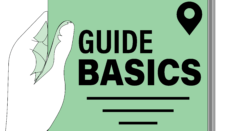The curriculum vitae is an essential tool in the job search process and in order to advance in your career. It’s not always clear, however, that the difference between a good resume and a summary of work history can be the determining factor in your ability to land an interview and perhaps find your dream job. This article will show you how to make a resume. After reading this section you will know:
- How to make a resume.
- The best format to be adopted for your profession and goals.
- What to include and what to exclude when writing a good resume.
- The importance of adapting your resume to your training and desired position.
The format of a curriculum vitae that works and results.
- The curriculum vitae must be in 2 pages.
- The preparation of the curriculum vitae and being clear to whom it is addressed is very important, you should start by organizing to collect the experiences, skills and achievements that you consider appropriate for the profile of the person who will make the selection of the resumes and to meet the requirements of the specific position.
- It places the main points more aligned with the position for which you are interested.
- Do not feel uncomfortable when entering personal data such as marital status, number of children, etc.
- The resume should begin with a brief summary of oneself. Avoid the different typical phrases such as “endowed with great personal initiative”, “very good attitudes towards teamwork”, “innate leadership and communication skills” and worry about leaving those skills described in the projects and jobs in which you have worked.
- Remember that the person in charge of carrying out the selection process will take into account the jobs and the role you have had in them.
Give importance to the results.
- Simply indicating the positions held and the responsibilities is not enough. It is essential to explain the achievements and fulfillment of objectives that you have made in previous positions.
- What is the difference between an achievement and a responsibility? The achievement is an affirmation of added value to a company.
Know how to do marketing yourself.
- Highlight the positive characteristics that distinguish you and that will allow you to stand out from the rest of the job applicants.
- The curriculum vitae must be printed on paper and well constructed.
- The resume should be clear in form and style – It seems obvious, but not all resumes are presented this way.
- Be objective. Have an impartial person read your resume (not friends or family). Keep in mind that you may have to make changes before the final version.
- Don’t forget about your skills outside of work. There may be activities that you do on a personal level that could impact your suitability for a particular position.
- The resume should also briefly explain what your future potential is. For example, if you are thinking of obtaining a postgraduate, master’s or additional professional title, it can give value to your candidacy.
Curriculum Vitae: chronological order or by function.
- The most widely accepted style at the time of making the curriculum vitae is the chronological one.
- The summary is presented by listing the professional work experience, giving special interest to the tasks performed and the results obtained.
- The chronological order must be in reverse order: starting with the most recent job, which can give the resume more relevance, since it generally coincides with the most significant experience.
- In some situations, however, the functional resume is accepted and sometimes even more appropriate depending on the desired position. However, writing a functional resume is a useful exercise in preparing for an interview .
To do
- In the event that masters and postgraduate courses have been completed, list the qualifications, specifying the name of the institutions that taught them.
- Enter the professional training courses taken recently.
- Specifies the degree of knowledge of languages.
- Add any (unusual) interest.
What you should avoid?
- List each easy course you have attended.
- Specify nationality, political affiliation, race, etc.
- Defining knowledge of a language as “good” if you really can’t hold a fluent conversation.
- Specify very common and evident interests.
Instructions for making a resume
- Read the ad carefully. If the ad is written to send your resume by mail or fax, do not use email, even if it is the most “comfortable” option, you risk not being taken into account even if your profile is better than others.
- The cover letter, yes. Although it is not always necessary, the cover letter is an important element to express the reasons that motivated you to propose training and experience. Sending the cover letter does not increase costs and is an excellent tool to make it clear who you are and what you would like to “grow”.
- Tell the truth, the whole truth and nothing but the truth. Too often, we tend to magnify our own experiences or roles within previous operating structures and show ourselves to be better than others. Do not do it: it is a risk that is not worth taking because, sooner or later, there will be a practical test where what we know will be demonstrated and if we have lied, we will be exposed. It’s better to be honest when you say you have no experience, but you are very interested in learning.
- A picture is worth a thousand words. Attach an image in personal portrait format to the application, trying to be yourself and being very careful with: – Do not send photos from 10 or 20 years ago. – Do not send photos that show attitude states. – Do not send photos with a loose tie and a poorly ironed shirt. – Do not send photos where you can be seen in a bad state of health.
- Do you want to wear a tuxedo for breakfast? The resume is a tailored suit that needs to be changed depending on the occasion so you will often need to rework the content, based on the specific professional competencies required by the recipient. If you intend to work in a publishing house, it will be totally useless to introduce the experiences in summer camps as an instructor, or as a domestic worker or babysitter.
- The simplicity, the simplicity and the simplicity. Unless you are a painter, marketing manager or communication professional “designer”, avoid using too complicated or trivial graphic styles (such as clip art in Word): The resume is just the design of a professional profile of the candidate, and filling it with colored flowers or books is the worst image it can show.
- Be careful with the details. Write “Dear Mr. Smith” or “Dear” (without specifying the name), again citing the law 675/96 or grammatical errors are obvious symptoms of superficiality and lack of precision. Before sending your curriculum vitae, read it several times to make sure that everything is written correctly and that the authorization for the processing of your data is signed.
- Don’t be too general or too picky. Brevity and completeness are the key words to compile a good resume: preparing a 10-page dossier is not synonymous with more experience, but it can be a clear lack of analysis and synthesis.
- No! to typical phrases. the vast majority of candidates write in their curriculum vita phrases such as “strong inclination to teamwork”, “I have good interpersonal skills” … Absolutely avoid aseptic phrases using phrases that do not add anything to your profile and look for a more personal way to They know you and you can stand out from the other candidates.
How to make a resume with WordPress?
The moment you start creating your resume from scratch, it is best to use a predefined template from a text editor. WordPress has been offering several predefined templates for several years so that you do not have to start editing your curriculum vitae from scratch, but we must emphasize that in these templates it is very important that you look for a suitable space to incorporate your photograph that, as we have already mentioned, It is an aspect that must be highlighted in your curriculum vitae. When creating a new document with WordPress, you will be shown a series of templates and among them you can choose the Curriculum option and choose the one with which you feel more comfortable and identified.
If after following all these tips at the time of writing your curriculum vitae and you have not been accepted in the candidacy in which you were interested, you can send us the curriculum and we will try to give you some suggestions to improve it and that in the following selection process you have a little More possibilities to access the position you want.
